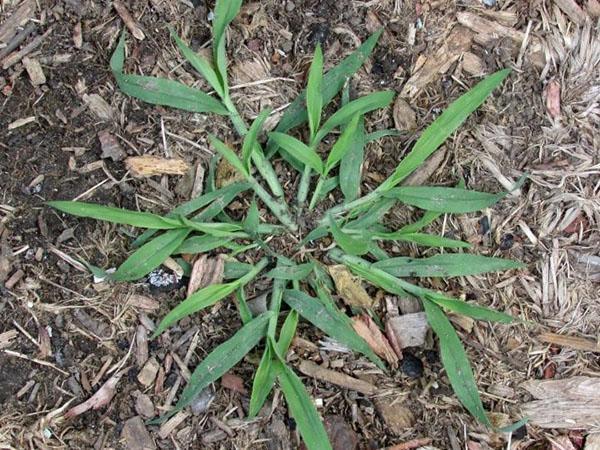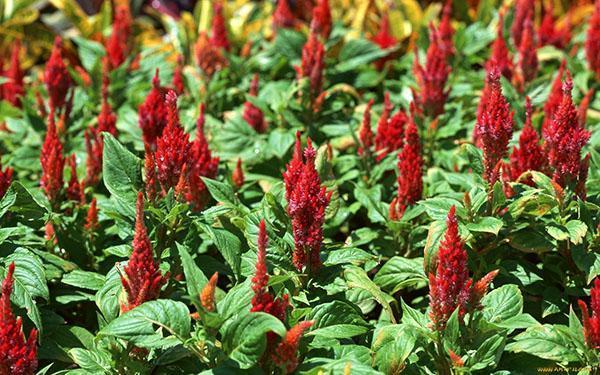Common garden weeds
 It is very important to be able to distinguish between weeds and your flowers, if only because you need to get rid of pests. Growing crops in the garden, you, in any case, grow weeds at the same time. Please note that some of these (eg, cheese, dandelions, purslane) can be eaten when young and tender and are grown in an area free from pesticide treatment.
It is very important to be able to distinguish between weeds and your flowers, if only because you need to get rid of pests. Growing crops in the garden, you, in any case, grow weeds at the same time. Please note that some of these (eg, cheese, dandelions, purslane) can be eaten when young and tender and are grown in an area free from pesticide treatment.
The most famous weeds
We'll tell you about common harmful plants so you can easily spot impostors in your garden.
Rosichka

To prevent a problem, divide the struggle into two stages. In early spring, corn gluten flour (an organic herbicide) is used. At this time of year, the soil is still cold, and the crabgrass is weaker. Each time this annual emerges from the seed, and the herbicide prevents germination, thereby preventing the weed from developing. Re-seed your lawn in the fall. This will allow new grass to grow before weeds attack again next summer.
The best defense against crabgrass is a healthy, dense lawn and soil with the correct pH balance (7.0-7.5). Perennial ryegrass is a great option. It also provides insect control as it exudes a weak natural toxin that kills small flies. Rosichka grows well in compacted lawns, therefore, treatment with hydrogen peroxide 3% in the proportion of half a liter per 9 sq. m. lawns will help eradicate the annoying plant.
Mary (Amaranth)
 The annual weed propagates by seed and stands out with its characteristic fleshy red main stem. It appears in late spring or early summer and enjoys warm weather. Try to weed out the mud before it blooms.
The annual weed propagates by seed and stands out with its characteristic fleshy red main stem. It appears in late spring or early summer and enjoys warm weather. Try to weed out the mud before it blooms.
Cover your garden with winter mulch to prevent weed growth, and dig up the soil well in early spring. You can add new mari seeds in the process, so it's best to mulch the soil again. Cover the ground with five layers of wet newspaper and sprinkle with a 15-centimeter (5-inch) mulch on top.
Amaranth is edible... In June, the young leaves of the plant can and should be eaten as they are very nutritious.
You can stock these vitamin-rich herbs just like carrots and beets and then add to a salad, or cook like spinach. Native Americans use black mari seeds as baking flour.
Plantain

This hardy perennial multiplies by seed and thrives in meadows, pastures and lawns. It can appear at any time of the year. Pull the plant up by hand and destroy it.
Morning glory
 An annual plant propagates by seed or deep, horizontal roots. The flowering vine sprouts in late spring and is visible throughout the summer. Although the flowers look attractive, morning glory can be a serious problem in warm weather as it spreads rapidly. Try to weed the weed before flowering.
An annual plant propagates by seed or deep, horizontal roots. The flowering vine sprouts in late spring and is visible throughout the summer. Although the flowers look attractive, morning glory can be a serious problem in warm weather as it spreads rapidly. Try to weed the weed before flowering.
Mary white
 This fast growing annual is propagated by seed.In summer, the weed actively sucks moisture from the soil, so remove it as quickly as possible. Use a sharp hoe to clean the garden of this plant.
This fast growing annual is propagated by seed.In summer, the weed actively sucks moisture from the soil, so remove it as quickly as possible. Use a sharp hoe to clean the garden of this plant.
Creeping wheatgrass
 Wheatgrass is a persistent perennial herb. Its articulated, long, straw rhizomes form a continuous cover on the soil from which new shoots grow. Try to dig up this weed as soon as you spot it in the garden. Propagated by seeds.
Wheatgrass is a persistent perennial herb. Its articulated, long, straw rhizomes form a continuous cover on the soil from which new shoots grow. Try to dig up this weed as soon as you spot it in the garden. Propagated by seeds.
Dandelion

Known for their bright yellow flowers and puffy, spherical heads, dandelions are one of the most recognizable types of garden weeds. The serrated leaves of this perennial are edible and are sometimes used in salads due to their high vitamin and mineral content.
To pull out a dandelion, grasp the base firmly and rock it gently until the deep root is completely free of the ground. Alternatively, use a hand shovel to scoop up the weed. Try to remove all of the dandelion root at once, as any part left in the ground can grow back.
Purslane
 This annual plant reproduces with tiny black seeds and stem fragments. The weed appears in late spring - early summer and loves warm weather and rich fertile soil. Weed or draw out the purslane as soon as you see it, and then destroy it. A harmful plant can live in your land for many years.
This annual plant reproduces with tiny black seeds and stem fragments. The weed appears in late spring - early summer and loves warm weather and rich fertile soil. Weed or draw out the purslane as soon as you see it, and then destroy it. A harmful plant can live in your land for many years.
Shepherd's bag
 The flowering annual weed loves cool weather, and its yellow-brown seeds can survive for a long time in the ground. Try to remove this plant before it spreads the seeds.
The flowering annual weed loves cool weather, and its yellow-brown seeds can survive for a long time in the ground. Try to remove this plant before it spreads the seeds.
Now you know how to deal with weeds, and how to distinguish them among useful plants in your area. Remember, harmful crops must be eliminated quickly and ruthlessly. Then the soil will be fertile and the garden well-groomed.